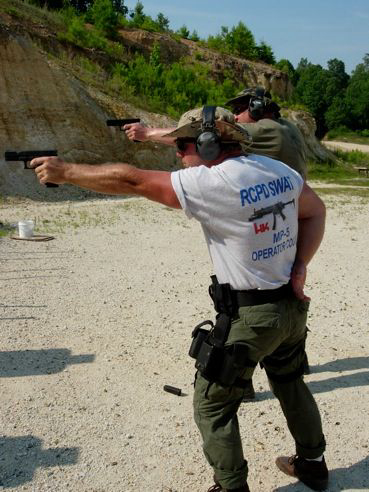Editor: Today’s classic is from 2011.

“Amateurs imitate and professionals steal,” I think is how the old saying goes. This is true of any art, and it applies to fighting with firearms as well. As with all weapons, there are techniques which apply to specific applications -- and principles, which hold for a variety of situations. You have to know both in order to fight efficiently with firearms. In the beginning we imitate the actions of others so that we can learn the physical actions. Eventually we start wiring it into the thought chain, actually learning the mental aspects of the process. As we learn these skills they become part of us, and we become part of them.
When you start to study firearms, everything is new, and once you get into it, realizing that shooting is a small part of the big picture, there is a lot of information to be processed and performed. With firearms you have to learn the fundamentals – marksmanship, manipulations, how to move and use cover – and actually drill on these skills to the point that you can perform them all properly, and without much conscious thought.
Once these skills have been mastered you have freed up the conscious mind to start thinking about tactics. This entails working scenario-based drills, starting with the simple and progressing up to the complex. At this point you are actually learning how to use the separate techniques and principles you’ve acquired as dictated under a variety of situations and conditions.
Now is the point that you start to form and create your martial art. In the beginning we were imitating what we saw others doing, without the knowledge necessary to fully understand the what, why, when, how, what if and such of what we were doing. Once you have a working understanding of all this, then you must make them work for you. Modifications are made to fit your physical capabilities, the mechanical aspects of your body.
The same is true for how you process the problem mentally. Do you see the individual aspects first and then combine them into the big picture, or do you notice the larger framework of what’s occurring and then the separate segments? Normally an individual is naturally inclined to see the forest or the trees and then work the other direction. Our job is to train the mind so it can process from one to another as dictated by the situation you face.
Your task is to develop your art, as an individual, not simply mimicking the moves of someone else. Your art will be different from the art of others. It doesn’t have to be pretty; you don’t want it complicated or fancy, it just has to work, every time.
Reaching this point requires plenty of training/practice, and thought. Remember fighting is a mental process, and defeating the threat requires thought. Evaluate the situation, create a plan, and then act, performing the skills needed to win.
— Tiger McKee